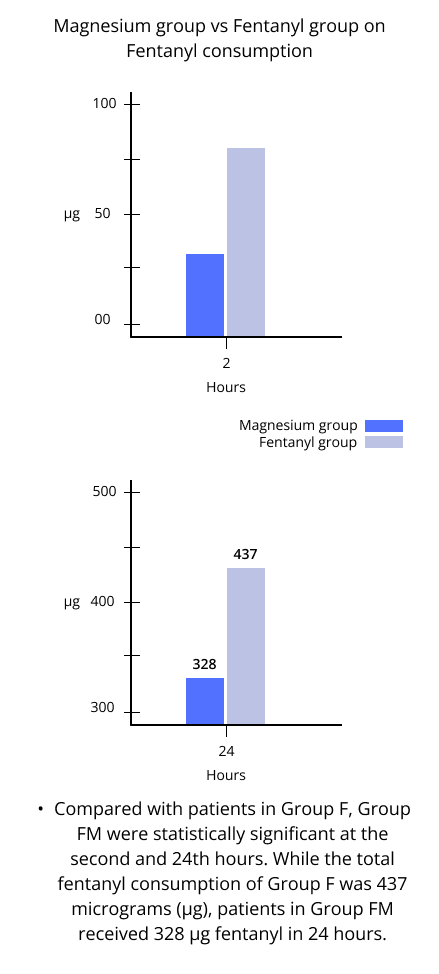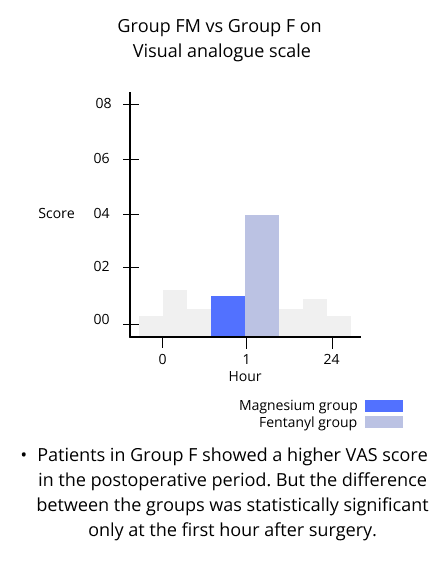
Prolonging Regional Anesthesia and Postoperative Pain Relief with Magnesium

Table Of Contents
Regional Anesthesia for Post-Operative Pain Relief
Regional anesthesia has been found to be a safe and inexpensive technique in prolonging pain relief after surgery. It is important to treat postoperative pain effectively, as it can dull the body’s nerve and endocrine responses. Many different techniques and drugs are being studied to prolong the duration of regional anesthesia and postoperative pain relief without the associated side effects.
Can Magnesium Help Reduce Pain After Surgery?
Magnesium is a mineral that is important for the body. It helps to reduce pain, especially after surgery. Some studies show that magnesium can be given intravenously or intrathecally (injected into the spinal cord) to improve anesthetic and analgesic quality. However, no study has been made on the effect of magnesium given epidurally (injected into the space around the spinal cord) with opioids.
We aimed in this study to see if adding magnesium to postoperative epidural fentanyl would decrease the amount of fentanyl needed and improve the quality of analgesia.
The Study on Magnesium Sulfate as an Epidural Analgesia
50 patients who just had hip surgery were randomly and equally allocated into two groups. Group F received fentanyl and saline, while Group FM were given fentanyl and magnesium sulfate as epidural analgesia for 24 hours.
Before the operation, patients were informed on visual analog pain (VAS) scales and how to use the patient-controlled epidural analgesia (PCEA).
All patients using the PCEA device had a demand bolus dose of fentanyl 5 milliliters (ml) with no background infusion, lockout interval 20 minutes, and a 4-hour limit of 30 ml fentanyl. In Group F, patients received epidural saline at a rate of 1 ml h-1 for 24 hours with another infusion pump. In Group FM, patients were given 50 milligrams (mg) magnesium sulfate in 5 ml volume as a bolus dose, followed by a continuous epidural infusion of 100 mg at a total 24 ml volume for 24 hours.
Patients’ first analgesic requirement times were recorded. Pain assessments using a standard 10-point VAS (0 = no pain) were made at 30 minutes and then at 1, 2, 4, 8, 12, and 24 hours in the postoperative period. Patients were evaluated for the side effects of epidural drugs (drowsiness, respiratory depression, nausea, vomiting). Adverse events related to the drugs and epidural catheter were recorded throughout the 24-hour study with continuous monitoring up to 7 days after patients were discharged from the hospital.
The Results
Compared with patients in Group F, Group FM received smaller doses of epidurally infused fentanyl at all time points after 30 minutes and were statistically significant at the second and 24th hours. While the total fentanyl consumption of Group F was 437 micrograms (μg), patients in Group FM received 328 µg fentanyl in 24 hours. Patients in Group F showed a higher VAS score in the postoperative period. But the difference between the groups was statistically significant only at the first hour after surgery.


No side effects were reported, including nausea, vomiting, hypotension, drowsiness, and respiratory depression.
The Conclusion
Co-administration of magnesium for postoperative epidural analgesia resulted in reduced fentanyl consumption without any side effects.
Reference
Epidural Magnesium Reduces Postoperative Analgesic Requirement
Related Posts



Quick Links
Legal Stuff




